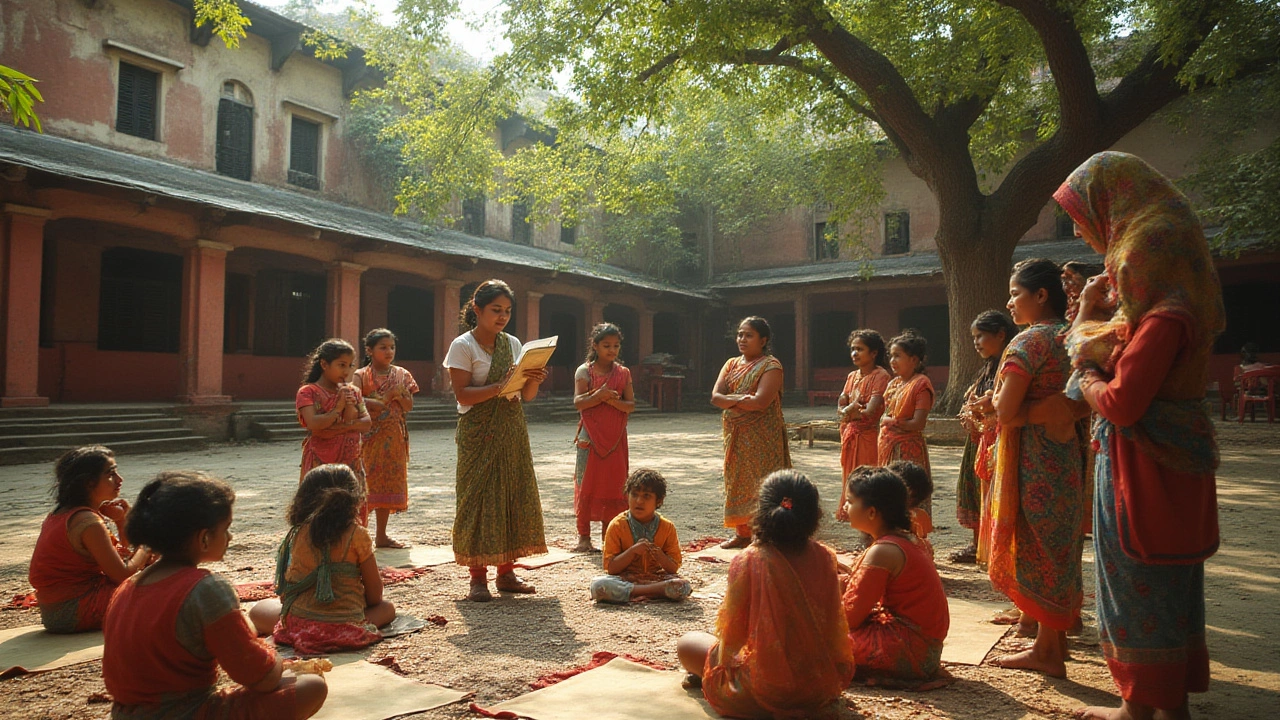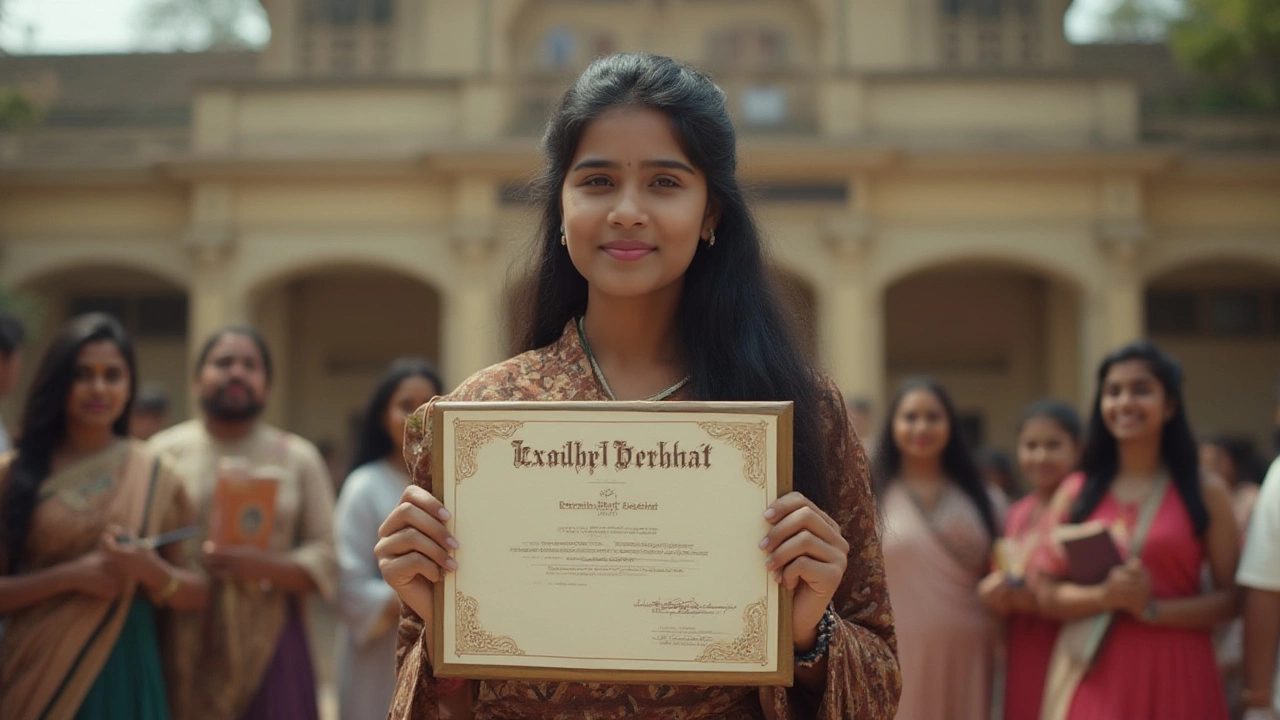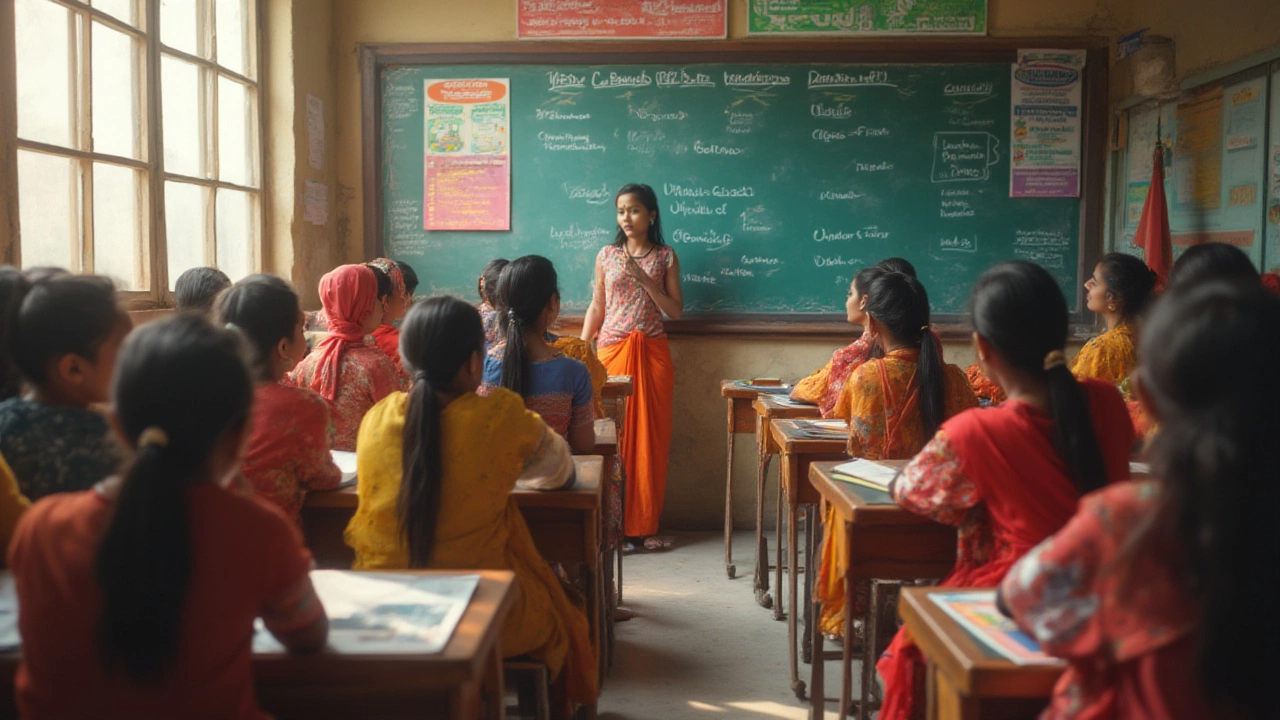Imagine a school that doesn't just teach students, but also teaches the teachers themselves. That’s the world of teacher training schools, and you might be surprised to learn they’ve been called by a different name for centuries—a name that’s not immediately obvious. In fact, these places shaped modern education, quietly working behind the scenes to set every classroom in motion. So, what’s a teacher training school also called? And why does this old-school institution matter now more than ever, especially when technology and fresh approaches keep changing the way we all learn?
Old Names, Lasting Impact: The Story of "Normal Schools"
Before anyone dropped terms like “B.Ed college” or “teacher education institute,” people used to call these places “normal schools.” It sounds odd at first—what’s so ‘normal’ about a teaching college? Well, the reason is buried in history. The term actually comes from the French “école normale,” set up in Paris in 1794. Back then, the goal was clear: build a standard (“norms”) for what teachers need to know and do, then send these folks out to help other schools adopt the same approach. In short, the idea was to make teaching less random and more, well, normal—consistent and reliable no matter who you are or where you study.
By the mid-1800s, normal schools had spread to the United States, making huge waves. The first public normal school opened in Lexington, Massachusetts, back in 1839. Suddenly, getting trained to teach wasn’t just about being good with kids—it became a full profession, with textbooks, exams, and even internships. The ripple effects were massive in India too, especially during the British era, where teacher training colleges were first designed to standardize English education. Over time, these "normal schools" evolved into what we now call teacher training colleges, institutes of education, or even schools of pedagogy, depending on where you are.
You might be surprised that even now, if you look up “normal school” in an old textbook or talk to an older educator, they’ll know exactly what you mean. It’s more than just a quirky term—it’s shorthand for decades of standards, transformation, and professional pride. Still, as education systems shifted from rigid memorization to student-centered, creative learning, these schools kept adapting. They became the testing ground for newer, better teaching methods, shaping how entire generations learned their ABCs and beyond.
To put things in context, let’s compare some essentials in a simple table:
| Name | Region/Common Usage | Main Focus | Modern Equivalent |
|---|---|---|---|
| Normal School | Europe, USA, Asia (historical) | Teacher standards, basic teaching skills | Teacher Training College |
| Teacher Training College | India, UK, Africa | Professional teacher education | B.Ed Institutes |
| Institute of Education | Global | Advanced teacher education, research | Ed Schools, Universities |

What Do Teacher Training Schools Actually Do?
So, what happens inside the walls of these teacher training schools? If you think it’s all about lectures and rote note-taking, think again. While you’ll definitely find courses in educational psychology, classroom management, and teaching methods, there’s a lot more behind the scenes. Trainee teachers spend time practicing real lessons in actual schools, guided by mentors who’ve been wrangling chalk and kids for decades. It’s hands-on, sometimes messy, and always a bit unpredictable—just like real teaching.
The classic “normal school” model focused a lot on practical skills. Trainees would observe seasoned teachers, then slowly start planning and giving lessons themselves. Feedback was direct (and often blunt). The whole idea: by the time you graduated, you weren’t just book-smart; you were truly classroom-ready. This tradition still survives, even in modern B.Ed programs in India, the UK, and beyond. Nowadays, the courses cover everything from how to design your own worksheets to handling diverse classrooms, digital tools for remote teaching, working with kids who need extra help, and even basic counseling skills.
This is also where a lot of innovation gets its start. Some of the best-known education experiments—think active learning, role-play, or project-based assignments—were first tested in these training schools before reaching the average classroom. In India especially, with lakhs of schools and a wide range of student needs, teacher training colleges have to be flexible and creative. Institutes like the Tata Institute of Social Sciences or the Central Institute of Education (Delhi University) are constantly updating their programs, running short workshops on coding, STEAM, environmental teaching, and social-emotional learning.
Modern teacher education programs keep pace with global changes. Since the pandemic, digital platforms like Swayam and Diksha offer online modules and blended courses—so future teachers can practice managing Zoom classes, or learn to make YouTube-style lessons kids will actually watch. There’s less emphasis on just memorizing laws and more on solving real classroom puzzles. How do you reach the quiet kid at the back? How do you handle 50 teenagers with 50 questions about the same algebra problem? A good teacher training school doesn’t just hand you a syllabus—it gives you the toolkit and the confidence for anything that walks through the school gate.
The demand for skilled teachers is booming. India’s National Education Policy (NEP 2020) aims to improve teacher quality drastically by insisting on four-year integrated B.Ed programs and continuous professional development. Sounds ambitious? It is. But the good news is, teacher training institutes—whether you still call them normal schools or B.Ed colleges—are rising to the challenge. They’re building digital labs, hiring faculty with real-world experience, and even letting trainees help design their own learning pathways.
So, in Chennai or Chandigarh, or anywhere else, a teacher training school is more than just another campus; it’s a launchpad, a laboratory, and maybe even a second home for the next generation of educators.

Tips for Choosing the Right Teacher Training School
The teacher training space is competitive. If you’re eyeing a career in teaching, picking the right school—whatever name you give it—could shape your entire journey. Here are some practical tips for sorting through the options.
- Check for Accreditation: Don’t just go by glitzy websites. Make sure the institute is recognized by the National Council for Teacher Education (NCTE) or an equivalent regulatory body. This ensures your degree isn’t just a fancy piece of paper.
- Ask About Practical Training: Real teaching practice is the heart of any good program. Ask how many hours you’ll spend in actual classrooms, what kind of guidance you’ll get, and what schools are part of their network.
- Explore the Curriculum: Look for programs that cover everything from theory to new-age skills. Courses on digital education, inclusive practices, and soft skills can make a big difference in today’s schools.
- Faculty Matters: Great trainers usually have teaching experience themselves—or even run research on innovative approaches. Find out if the institute supports faculty upskilling and invites guest educators from outside.
- Placement Records and Alumni Network: How many graduates land good jobs right after? Does the institute help with placements, internships, or clearing competitive teaching exams? A strong alumni base can open doors for your own career.
- Look for Extras: These days, top schools run workshops on everything from coding to classroom theater. See if you get exposure to these extras—they’re often what give new teachers an edge, especially in private or international schools.
For a sneak peek, here’s a small roundup of well-known teacher training colleges in India and the programs they offer:
| Institute | Location | Popular Programs | Special Features |
|---|---|---|---|
| Central Institute of Education, Delhi University | Delhi | B.Ed, M.Ed | Research-driven, city schools practice |
| Tata Institute of Social Sciences (TISS) | Mumbai | Integrated B.Ed, M.A. Education | Community focus, hands-on projects |
| Lady Irwin College | Delhi | B.Ed (Home Science specialization) | Curriculum design, modern labs |
| Loyola College of Education | Chennai | B.Ed, M.Ed | Integrated practical internships |
If you’re considering the path, visit a few campuses or join a virtual open house. Talk to current students. Watch a sample class online. The right place will feel challenging, inspiring, and welcoming. And while “normal school” might sound boring, the reality is anything but. These institutes aren’t just prepping teachers—they’re reimagining what Indian classrooms can be in a tech-powered, fast-changing world. If you ask me, that’s pretty extraordinary.
